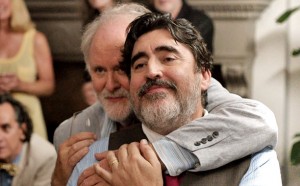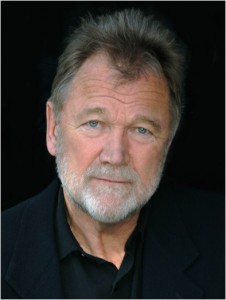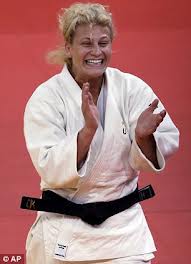Interview: Genevieve Bailey of “I Am Eleven”
Posted on September 21, 2014 at 8:09 pm
There’s a reason that so many heroes and heroines of classic literature are eleven years old. It is that last magical moment at the cusp of childhood and adolescence, which is what makes it so fascinating and delightful. Genevieve Bailey remembered the year she was 11 as one of the happiest of her life, and so she decided to make a movie about 11-year-olds around the world, a wide variety of religions, cultures, nationalities, economic and educational levels, but all extraordinarily open, thoughtful, and engaging. At the end of I Am Eleven, she revisits one of the boys, now 14. When she asks him a question, he says, “That’s embarrassing,” and refuses to answer, and we see how precious those last moments of childhood are.
Why is it that the sense of embarrassment accompanies adolescence?
It’s true. I think when you become a teenager, there’s all sorts of things that we all go through; more self centering and feeling like life is more complicated and worrying about looking cool and acting cool. That doesn’t happen too much when you’re 11, it’s just before all of that.
I think people will be surprised to see how philosophical these kids are, how deeply they thought about life.
Yes, that’s definitely been the response, we’ve screened at film festivals are in 20 countries and across cultures we are often surprised particularly by boys like Remi. They say, “Is he really 11? Is the French boy really 11? He is such an old soul and his sense of humanity and community is very strong at a very young age.”
Tell me a little bit about how you found these children.
I decided on landing in these foreign countries where I didn’t speak the language, the easiest way to find children would be to go through schools because of course, that’s where they are Monday to Friday every week. But I did also worry a little bit that don’t teachers might nominate the students with the best grades or they might pick one of the kids who has acting experience and I didn’t need those things. I just needed the child to be 11 and want to be involved.
So I thought rather than going through schools, I wouldn’t take the easy approach. I would actually hit the streets and try to find children in the mall, or in some other random way. So I would go to marketplaces, I would go to families, ask people if they knew anyone who would want to be involved. Each country brought its own challenge and sometimes I found them quite quickly in weird and wonderful ways and sometimes it took a lot longer.
But I’m really glad that took this approach rather than auditioning dozens of children to select someone for the film. In some ways, the children found me in their own weird and wonderful ways when I was out in the city.
I tend to assume as I think most people in the first world do that children around the world are very influenced by Anglo-American culture. Did you find that to be true?
I didn’t find that to be true because I covered such diverse places and I went to 15 countries and the children were speaking in 12 languages. I think that definitely in Western English-speaking world, there are obviously influences. But the thing I really wanted to uncover, some places that I knew very little about like Morocco and Bulgaria and explore these words through the eyes of kids because I think there is a sense of clarity at that age in expressing who they are and their identity.
So yeah, I did see influences but there were a lot of things I did not know until I went to places kind of outside of the usual tourist traps and where backpackers normally go.

I particularly enjoyed the scenes with the children dancing.
Yeah, I love that. That wasn’t a deliberate conscious effort for me to ask the kids to dance. It was something that was happening organically and I love that because I love dancing when I was 11; much like Kimberly, I used to dance in front of my mirrored wardrobe to no end. And that was something that was really nice to see across cultures.
Yeah, the influence of music and dance was seen in each community so I’m really glad that I was able to edit together that sequence that’s taken from around the world and watching the children dance. I particularly like Billy’s dance moves on his bedroom floor.
You seem especially fond of him. Talk to me about him a little bit and about why you chose to include his father, one of the few parents in the film.
From the minute I walked into the Billy’s flat in London, I was completely charmed. And I ccouldn’tturn the camera on quick enough that she was ready to go – he was on the couch, he was asking me all sorts of questions. He wanted to know if I had a theme song yet. Because he had a theme song he wanted for the movie, a 1984 wrestling movie theme song, he thoguht might be appropriate. And I was kind of just bowled away by his idiosyncratic way of speaking and his sense of humor; he was very cheeky but also very honest.
Audiences have really taken to him; he has resonated across the world. Especially young audiences always come out of the cinema saying, “We want to meet Billy!” Billy is autistic and he is very happy to chat specifically about that. And basically I think sometimes we see films and read books or articles about children on a spectrum and they focus on the challenges of what makes it difficult. For most, that’s true. The film does not label him but he is really celebrated by audiences and I think it’s great for children to see that it can be really a positive thing. Billy has his way of engaging audiences and I’m really glad that he is in the film. His family is very loving and they celebrate him. Hiis father was obviously very impressed and proud of how far he had come and that’s why I decided to include that scene where he explains that when Billy was young, he couldn’t talk or he couldn’t hold a pencil.
I think he provided some insight for the people watching the film, into how Billy has developed and that’s the reason why I decided to include that scene. And I also felt that Billy, when he was in that scene, he was very comfortable. I also included the moment of Jamira with her father when it was Father’s Day and a few of those moments with adults because obviously as children, we are very influenced by those who are raising us; our mother, our father or both. But yeah, I was very conscious that for every minute or two that I used my screen time on exploring adult relationships that would be a couple of minutes and had to take away from the children. So that’s why I was very conscious of having a limited presence of adults on screen but there was little bit of it in their obviously to give some background context to certain relationships that I felt were very insightful.
Another one which I thought was very worthwhile was the guy from the orphanage talking about the house they were going to build for the children.
When I first went to the orphanage, obviously there are all different sorts of orphanages around the world; there are ones that are well run and there are others that are not so well run and ones where there is a lack of resources. And when I arrived in India I definitely saw that they were short of certain things but what they weren’t short of love and I felt very happy to know that we could still get involved on a long-term basis in supporting the kids and empowering them and having a focus on making sure they can complete their education and not have any financial hardship in regards to doing that. And because we knew that they were being cared for very well.
Despite their adversity in younger years, they are in a very safe place now.
Most people feel that children of that age are either too young or would be too upset to deal with the world’s various problems but these children seem to deal with them in a very honest way and yet not lose their sense of optimism.
Absolutely. That’s what I found across the board in every place that I went to. This sense of optimism and I think when you are 11, you are excited about dreaming big and you are ambitious and whether or not you are growing up in a privileged environment or a challenging one, you really believe that things are possible when you are 11.
I think sometimes we become teenagers, we lose that a little bit and obviously into adulthood we often lose that and become more cynical or skeptical of pursuing certain dreams. But I love that when they are 11 that they do really believe that dreaming big is a good thing.
Was it difficult to edit all of your footage into feature-length?
It was a challenge but it was a huge learning experience. I am glad that I didn’t fear the risk factor of including so many voices. Sometimes we are used to seeing films with three or four characters and of course, I could have chosen three or four of the English-speaking kids but I really wanted the audience to feel that they have traveled around the world in a hour and a half and seen some places maybe they haven’t seen on screen before. So it was a risk to include so many children in the same but I am glad that I didn’t shy away from the risk.
What did you learn from the 11 year olds?
11-year-olds are courageous and I think that rubbed off on me. I am glad that people have the opportunity to meet all these different voices. I could’ve made the film just in Melbourne with all different children but I really wanted to visit these places for the first time. I had never been out of Australia so the big challenge that I set myself was to go around the world and not leave any city until I had met an original there. So that was a little part of my process.
I think that as a filmmaker, I fell in love with these kids and they are big part of my life. They are like my nieces and nephews. But to be honest, you kind of expect them to be a bit excited about the film as what you are. But as we have traveled with the film and screened it and we visited these kids, I’m really glad that even if some of them laugh at their hairstyles or some of the boys whose voices have now broken say, “Oh, my voice was so squeaky?!” But they are all really proud of themselves and how they are represented and also proud of being part of a really global perspective on the world. So I think that is something that I’m really happy with, with the children that are proud of being part of “I am Eleven.”




 It is a remarkable story. In 1959, when she was a single mother, Rusty Kanokogi disguised herself as a man in order to compete in the New York State YMCA Judo Championship. She beat the reigning champion and won the tournament. While on the podium after having received her medal she was asked if she was a girl. She admitted that she was.
It is a remarkable story. In 1959, when she was a single mother, Rusty Kanokogi disguised herself as a man in order to compete in the New York State YMCA Judo Championship. She beat the reigning champion and won the tournament. While on the podium after having received her medal she was asked if she was a girl. She admitted that she was.